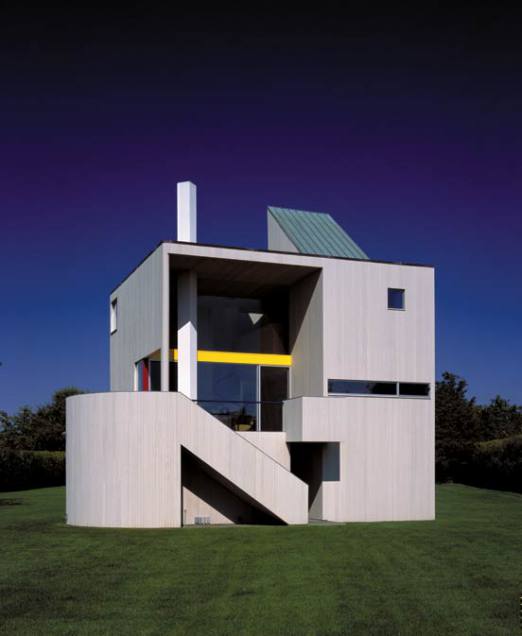Hamptons Architecture Through the Ages

The end of summer is upon us, and it is almost time to fill my photo albums with all the great memories shared with friends and families. Many of the highlights of my summer have taken place in and around solid East End architecture – the rich visual diversity of history and design in the Hamptons. I have always found a great deal of pleasure in driving around the local towns and villages to observe the ever-changing building world of the East End. I am probably the guy being honked at on the road, as I slow down to peer through the privet to catch a glimpse of a home or detail. I will never take for granted the unique opportunity I am afforded to live in an area that allows me to experience such varied local architecture – from Southampton’s Halsey House of 1660 to the most modern, cutting edge architectural designs.
In that vein, I would like to present a Hamptons architectural road trip. I find it incredibly interesting to drive down these streets and see the passage of time marked by the juxtaposition of both traditional and contemporary architecture.
Starting your drive in Westhampton Beach, head east down Dune Road. This narrow strip of barrier land, up to Tiana Beach, has some of the most varied, eclectic and diverse architecture you will find on the East End. All these homes share the commonality of being designed for beach living. Dune Road offers everything from the shingle style homes of the 1880s to the postmodern homes of the 60s and the modern steel and glass structures of 2012.
Then, it’s off to Southampton Village for a jaunt down Gin Lane. This street is ripe with the homes of the old world aristocracy, as they meet the ultra clean lines of modernism. There are few streets in the Hamptons where you can experience sights like the storied shingled gables of the Meadow Club and a fully restored Norman Jaffe design within walking distance of each other.
In Bridgehampton, take a right at the monument down Ocean Road, passing the colonial architecture at the square and head south to the ocean past Sams Creek. The last street on our left is called Surfside Drive. Head east. This tiny little street has the entire field guide to American architecture built on it. You start with shingle style architecture and progress to everything from adobe style architecture of the Southwest to, in my opinion, the finest example of Frank Lloyd Wright inspired design on the East End.
The next village is Sagaponack, and a trip down Daniels Lane should not be missed. Heading east, you will pass original summer cottages, shingle style homes, contemporary architecture and hopefully a glimpse at one of the largest homes in America. The Rennert estate can best be seen from a stroll down to Peter’s Pond Beach.
In the village of East Hampton, don’t miss the beautiful design of the Jewish Center of the Hamptons. At the duck pond, make a right toward Main Beach, and then enjoy the estate section, as you take a right onto Lilly Pond Lane. This street and area is home to some of the finest examples of East End architecture from every decade.
After this brief drive, head east again and look for Further Lane to take you through time, paying particular attention to the storied Maidstone golf clubhouse.
I start to wind down my trip by heading for Amagansett on Bluff Road. You pass the community of Beach Hampton, which boasts the wild architecture of the 50s and 60s. Try to take note of perhaps the most iconic symbol of postmodern architecture of the 1960s – the home that famed architect Charles Gwathmey built for his parents. The house was extensively published, and the angular structure catapulted Gwathmey into worldwide acclaim.
I finish my tour by heading over the Napeague stretch and out onto Old Montauk Highway. This windy, hilly, old cow path of a road holds architectural treasures that are best discovered from a slow-moving vehicle.
My tour complete, I head to the village of Montauk and take measure at what I have passed along the way. It has been a fantastic journey through the heart of some of the finest architecture you will see in this country. Head out to explore, and Happy Labor Day.
John Laffey is an architect whose firm, John P. Laffey Architects, is based in Water Mill. You can reach him at 631-726-5108.



